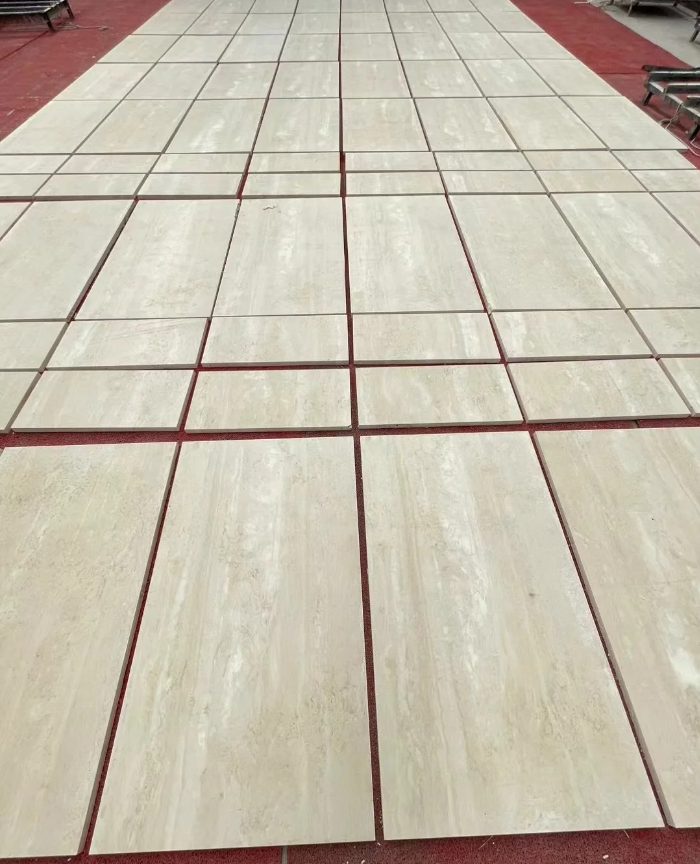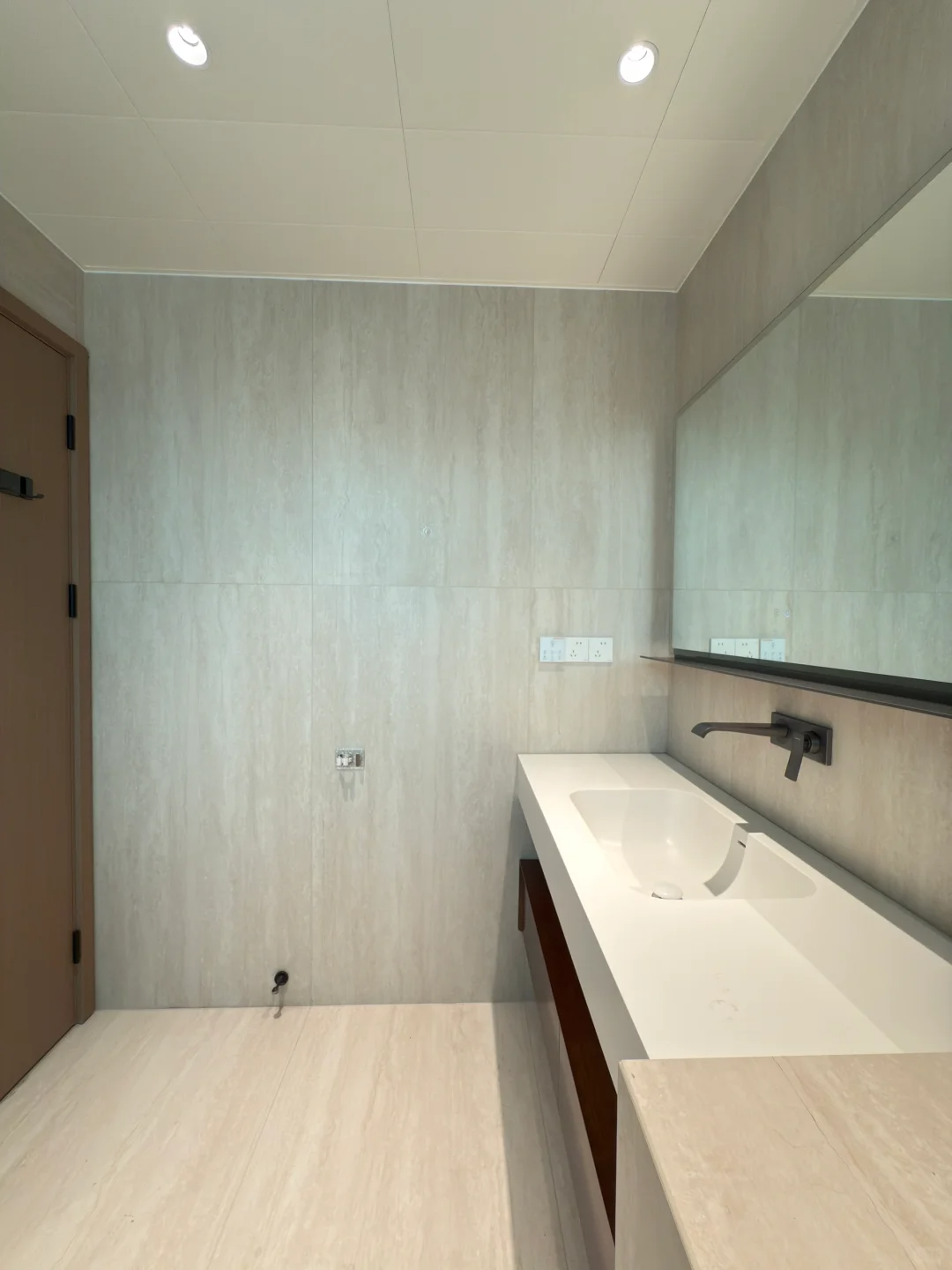A Simple Guide to Choosing the Right Travertine Tile for Your Space
Travertine tile is a beloved choice for homes thanks to its natural charm, durability, and ability to fit into many styles. With its warm tones and unique texture, it can transform any room from ordinary to inviting. But with so many options, picking the right travertine tile for your space can feel tricky. This simple guide breaks down the key things to consider, so you can choose with confidence.
Start with Color: Match Your Space’s Vibe
Travertine tile comes in a range of natural colors, each bringing a different feel to your space. The most common shades are soft beiges, warm creams, light ivories, and deeper earthy browns. Some tiles even have subtle hints of gold or gray in their veins, adding extra character.
Think about the mood you want to create. Light beige or cream travertine tile makes a room feel bright and open, perfect for small spaces or rooms with little natural light. Warmer brown tones add coziness, great for living rooms or bedrooms where you want to relax. If your space already has bold colors in furniture or walls, a neutral travertine tile (like soft beige) will balance things out. For a more dramatic look, try a travertine tile with darker veins to add contrast.
Pick the Right Finish: Style and Practicality
The finish of your travertine tile affects both how it looks and how it works in your space. Here are the main options:
- Honed: This finish is smooth and matte, with no shine. It has a natural, understated look that works with almost any style, from modern to rustic. Honed travertine tile is great for high-traffic areas like hallways or kitchens because it hides scratches and water spots better than shiny finishes.
- Polished: Polished travertine tile has a glossy, reflective surface that adds a touch of luxury. It makes rooms feel brighter by bouncing light around, which is nice for dining rooms or entryways. Keep in mind that polished tiles show smudges and scratches more easily, so they need a bit more care.
- Tumbled: Tumbled travertine tile has a rough, weathered texture with rounded edges, like it’s been worn smooth by time. It has a cozy, vintage feel that fits perfectly with farmhouse or Mediterranean styles. Its textured surface also makes it non-slip, making it a smart choice for bathrooms, showers, or outdoor patios.
Choose a finish that fits your lifestyle: honed for busy spaces, polished for elegance, and tumbled for warmth and safety.
Size Matters: Fit the Tile to Your Room
Travertine tile comes in different sizes, and the right one depends on how big your space is.
- Large tiles (18x18 inches or bigger): These work well in large rooms like open-plan living areas or spacious kitchens. They create fewer grout lines, making the space feel clean and open. Large tiles can also make a room look bigger than it is, which is great for main floors.
- Medium tiles (12x12 inches): These are versatile and fit most spaces, from bathrooms to bedrooms. They’re easy to install and balance well with other elements, like cabinets or furniture.
- Small tiles or mosaics: Smaller tiles (like 6x6 inches) or mosaic sheets add detail and texture. They’re perfect for backsplashes, shower niches, or as accent strips in larger floors. Mosaics can also help hide uneven walls in bathrooms or kitchens.
Avoid using very small tiles in large rooms, as too many grout lines can make the space feel busy. For tiny rooms, small tiles can work but stick to lighter colors to keep the space from feeling cramped.

Thickness: Durability for Your Needs
Travertine tile comes in different thicknesses, and choosing the right one depends on where you’ll use it.
- Thicker tiles (10mm or more): These are stronger and more durable, making them ideal for floors that get a lot of foot traffic, like hallways, kitchens, or outdoor patios. They can handle heavy furniture and daily use without cracking.
- Thinner tiles: These are lighter and better for walls, backsplashes, or low-traffic areas like bedrooms. They’re easier to install on walls and still look great, but they’re not as tough for floors.
If you’re using travertine tile for both floors and walls in the same room (like a bathroom), you can mix thicknesses: thicker for the floor, thinner for the walls.
Quality Check: Spot the Best Tiles
Good quality travertine tile will last longer and look better. When shopping, check each tile for:
- Cracks or chips: Run your hand over the surface and edges. Small cracks can get worse over time, especially in high-traffic areas.
- Consistency: Travertine is natural, so some variation is normal, but tiles in the same batch should have similar color and pattern. Avoid tiles with big, sudden changes in color, as they’ll look uneven when installed.
- Pores: Travertine has small natural holes (called pores). Some tiles come with these pores filled (for a smoother surface) or unfilled (for a more rustic look). Both are fine, but make sure the filled pores are smooth and even, with no gaps where dirt could get trapped.
Ask to see a sample of the tiles in different lights—natural daylight and indoor lighting can make colors look different. This helps you avoid surprises after installation.
Where Will You Use It? Room-Specific Tips
Travertine tile works in many spaces, but each area has unique needs:
- Floors (living rooms, kitchens, hallways): Choose honed or tumbled finish for durability. Thicker tiles (10mm+) are best here. For kitchens, pick tiles with filled pores to make cleaning up spills easier.
- Bathrooms and showers: Tumbled or honed tiles with a non-slip surface are safest. Make sure the tiles are sealed well to resist water. For shower floors, smaller tiles or mosaics help with drainage and grip.
- Walls and backsplashes: Thinner, polished, or honed tiles work best. Mosaics add texture to backsplashes, while larger tiles create a sleek look on bathroom walls.
- Outdoor areas (patios, pool decks): Tumbled or honed tiles with thick thickness (12mm+) stand up to weather. They should be sealed to resist rain and sun, and their non-slip surface prevents slips when wet.
Grout: Finish the Look
Grout color can change how your travertine tile looks. Here’s how to choose:
- Matching grout: A grout color close to your tile (like beige grout with beige travertine) creates a seamless look, making the tiles stand out more than the lines.
- Contrasting grout: A darker or lighter grout (like gray grout with cream travertine) highlights the tile shape and adds pattern. This works well with mosaics or geometric layouts.
For high-traffic areas, choose a grout color that hides dirt, like gray or brown. In bathrooms, light grout can show mold more easily, so a medium shade is better.
Budget Basics
Travertine tile prices vary, but you don’t need to overspend. Here’s how to stay on budget:
- Stick to standard sizes: Large or custom tiles cost more. Medium tiles (12x12 inches) are often the most affordable.
- Choose common colors: Beige and cream travertine tiles are usually cheaper than rare shades.
- Buy extra: Get 10-15% more tiles than you need. This covers cuts, breaks, or future repairs, and it’s cheaper than buying more later (when colors might not match).
Remember, sealing and installation costs add up, so include those in your budget too.
FAQ
Can travertine tile be used outdoors?
Yes, but choose thick, tumbled, or honed tiles. They need to be sealed to resist rain and sun, and avoid polished tiles outdoors as they can get slippery when wet.
Do travertine tiles need to be sealed?
Yes, travertine is porous, so sealing helps prevent stains from spills (like coffee or oil) and water damage. Seal after installation and every 6-12 months, depending on use.
Is travertine tile hard to clean?
No, but it needs gentle care. Wipe up spills quickly, sweep or vacuum floors regularly, and clean with warm water and mild soap. Avoid acidic cleaners (like vinegar), as they can damage the tile.
Can travertine tile scratch easily?
It’s softer than granite, so it can scratch with heavy use. Use felt pads under furniture, avoid dragging heavy items, and seal tiles to protect the surface.
Does travertine tile fade in sunlight?
No, its natural colors are stable. It’s safe for sunny rooms or outdoor patios, though sealing helps protect it from UV rays over time.

